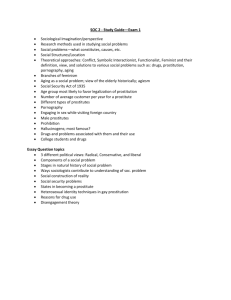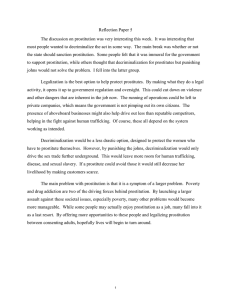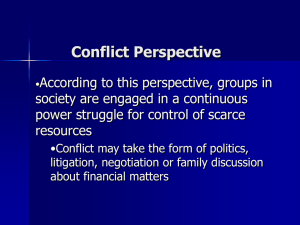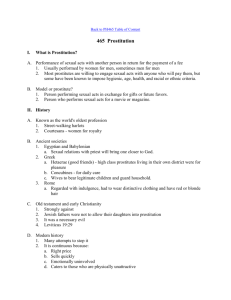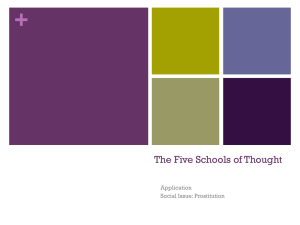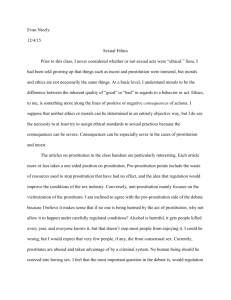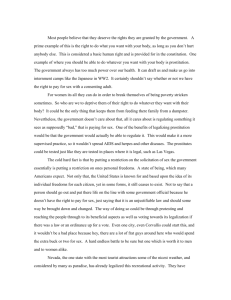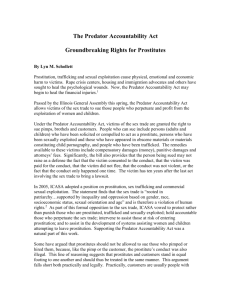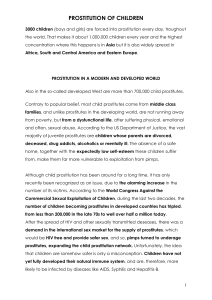Instructions: Read each descriptor (on education or prostitution) and
advertisement
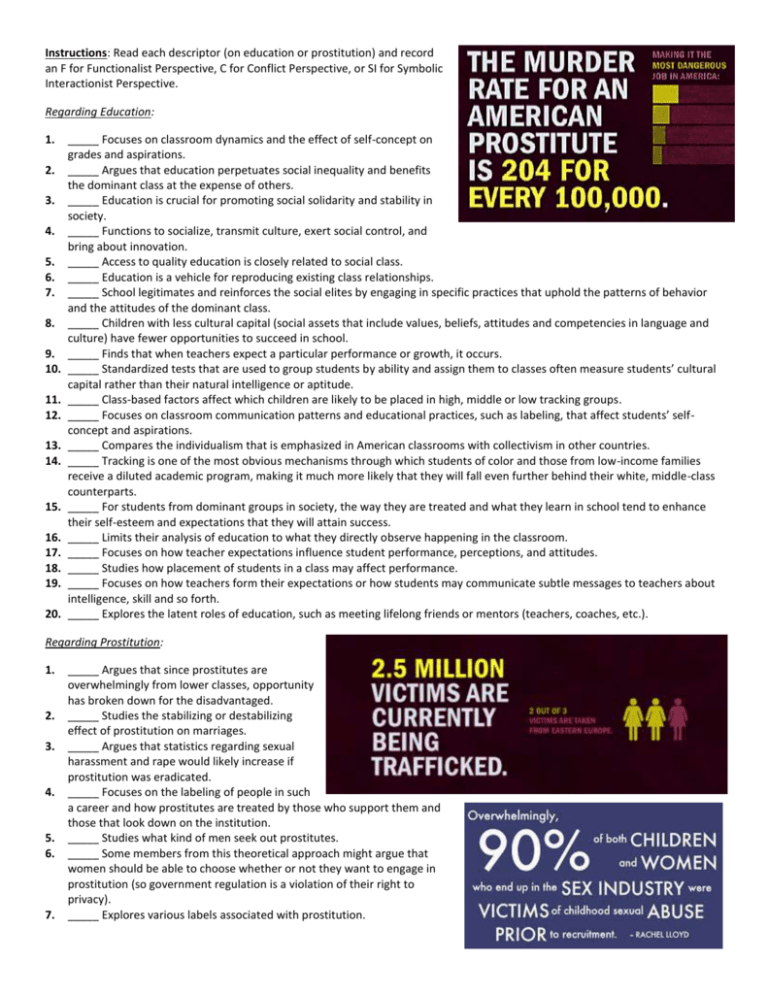
Instructions: Read each descriptor (on education or prostitution) and record an F for Functionalist Perspective, C for Conflict Perspective, or SI for Symbolic Interactionist Perspective. Regarding Education: 1. 2. 3. 4. 5. 6. 7. 8. 9. 10. 11. 12. 13. 14. 15. 16. 17. 18. 19. 20. _____ Focuses on classroom dynamics and the effect of self-concept on grades and aspirations. _____ Argues that education perpetuates social inequality and benefits the dominant class at the expense of others. _____ Education is crucial for promoting social solidarity and stability in society. _____ Functions to socialize, transmit culture, exert social control, and bring about innovation. _____ Access to quality education is closely related to social class. _____ Education is a vehicle for reproducing existing class relationships. _____ School legitimates and reinforces the social elites by engaging in specific practices that uphold the patterns of behavior and the attitudes of the dominant class. _____ Children with less cultural capital (social assets that include values, beliefs, attitudes and competencies in language and culture) have fewer opportunities to succeed in school. _____ Finds that when teachers expect a particular performance or growth, it occurs. _____ Standardized tests that are used to group students by ability and assign them to classes often measure students’ cultural capital rather than their natural intelligence or aptitude. _____ Class-based factors affect which children are likely to be placed in high, middle or low tracking groups. _____ Focuses on classroom communication patterns and educational practices, such as labeling, that affect students’ selfconcept and aspirations. _____ Compares the individualism that is emphasized in American classrooms with collectivism in other countries. _____ Tracking is one of the most obvious mechanisms through which students of color and those from low-income families receive a diluted academic program, making it much more likely that they will fall even further behind their white, middle-class counterparts. _____ For students from dominant groups in society, the way they are treated and what they learn in school tend to enhance their self-esteem and expectations that they will attain success. _____ Limits their analysis of education to what they directly observe happening in the classroom. _____ Focuses on how teacher expectations influence student performance, perceptions, and attitudes. _____ Studies how placement of students in a class may affect performance. _____ Focuses on how teachers form their expectations or how students may communicate subtle messages to teachers about intelligence, skill and so forth. _____ Explores the latent roles of education, such as meeting lifelong friends or mentors (teachers, coaches, etc.). Regarding Prostitution: 1. 2. 3. 4. 5. 6. 7. _____ Argues that since prostitutes are overwhelmingly from lower classes, opportunity has broken down for the disadvantaged. _____ Studies the stabilizing or destabilizing effect of prostitution on marriages. _____ Argues that statistics regarding sexual harassment and rape would likely increase if prostitution was eradicated. _____ Focuses on the labeling of people in such a career and how prostitutes are treated by those who support them and those that look down on the institution. _____ Studies what kind of men seek out prostitutes. _____ Some members from this theoretical approach might argue that women should be able to choose whether or not they want to engage in prostitution (so government regulation is a violation of their right to privacy). _____ Explores various labels associated with prostitution.
